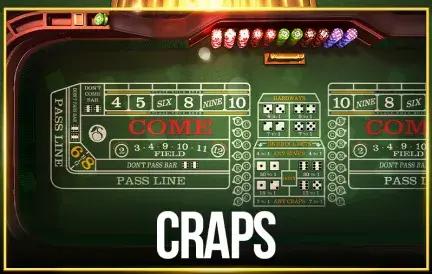Poker Hands Explained: Rankings, Order & Winning Combos
May 26th, 2025
24029
Before you even place your first bet in a poker game, you need to know your poker hands. Whether you're playing in a high-stakes Texas Hold’em tournament or casually bluffing your friends at a home game, understanding the poker hands ranked from best to worst is the cornerstone of becoming a strong player. 👊
This guide will break down all poker hands, show you how they work in real casino games, and give you smart tips to remember what beats what — so you're never confused at the table again.
What Are Poker Hands
- Helps players quickly identify the strength of their hand
- Essential for strategic decision-making in all poker variants
- Improves gameplay and increases winning potential
- Standardized hand rankings make it easy to learn and remember
- Applicable in online, live, and tournament settings
- Beginners may confuse some hand rankings initially
- High-value hands are rare, so wins may take time
🎮 A poker hand consists of five cards. The value of the hand is determined by the specific combination of cards according to official poker rules. In standard poker games, these combinations range from the mighty Royal Flush to the simple High Card. Players compare hands in poker to determine who wins the pot. While bluffing and betting strategies matter, knowing the poker hands ranking is the foundation of smart decision-making.
The specific cards you use to form your five-card hand can come from your hole cards (the private cards dealt only to you) and community cards (cards dealt face-up in the middle of the table, shared by all players), depending on the poker variant being played. For example, in Texas Hold'em, you use your two hole cards and five community cards to make the best possible five-card combination.
Where Poker Hand Rankings Apply (Texas Hold’em, Omaha, etc.)
🏆 Different poker variants share the same poker hands order, but how hands are made can vary:
| Poker Variant | Description |
|---|---|
| Texas Hold’em | The most popular poker game globally. Players make the best five-card hand from their two private hole cards and five shared community cards. |
| Omaha (PLO) | Similar to Hold'em, but players receive four hole cards and must use exactly two of them with exactly three of the five community cards to form their hand. |
| Seven Card Stud | Players receive seven cards throughout the hand (some face up, some face down) and make the best five-card hand from those seven. |
| Five Card Draw | A classic game where players are dealt five cards and can choose to discard some or all of them to draw new ones, aiming to improve their hand. |
| Short Deck Poker | Uses a 36-card deck (cards 2 through 5 removed). Hand rankings are slightly different (e.g., a flush beats a full house). However, the fundamental combinations are still recognized. |
While the core poker hands names and hierarchy are consistent, always check for specific house rules or game variant rules that might introduce slight deviations, though this is rare for standard hand rankings. Wherever you play, the poker hands chart remains largely the same.
Expert Tip: A Royal Flush is the highest hand, consisting of A, K, Q, J, 10 of the same suit.
Hand Strength vs. Betting Strategy
💡 Understanding poker hands in order is only half the battle; knowing how hand strength influences your betting strategy is equally crucial. Your perceived hand strength, and the potential strength of your opponents' hands, should dictate every decision you make – whether to check, bet, raise, or fold. A strong poker hand doesn’t always win if it’s poorly played. Here’s the balance:
- Strong hand, weak bet? You might get outdrawn.
- Weak hand, great bluff? You might steal the pot.
- Tight-aggressive players often combine high-value poker winning hands with smart, timely aggression.
So while knowing the best poker hands is essential, smart strategy turns knowledge into profit.
Poker Hands Ranked from Highest to Lowest
This is the official poker hands ranking used in most games like Texas Hold’em, Omaha, and Stud. Below you’ll find each hand explained with examples, odds, and when they're likely to appear. Let’s explore all poker hands from best to worst:
| Hand | Description | Example | Odds |
|---|---|---|---|
| Royal Flush | The unbeatable hand — A, K, Q, J, 10 — all of the same suit. Extremely rare and iconic. | A♠ K♠ Q♠ J♠ 10♠ | 1 in 649,740 |
| Straight Flush | Five consecutive cards of the same suit. Fun Fact: Royal Flush is a type of Straight Flush. | 9♦ 8♦ 7♦ 6♦ 5♦ | 1 in 72,192 |
| Four of a Kind | Four cards of the same rank. Tip: Watch out for the kicker! | J♣ J♦ J♠ J♥ 8♦ | 1 in 4,165 |
| Full House | Three of a kind plus a pair. Nickname: "Boat" | 10♠ 10♦ 10♣ 6♣ 6♥ | 1 in 694 |
| Flush | Five cards of the same suit, not in sequence. Tip: Suit matters, not order. | K♥ 10♥ 8♥ 5♥ 3♥ | 1 in 508 |
| Straight | Five consecutive cards of different suits. Reminder: Aces can be high or low. | 7♣ 6♦ 5♠ 4♣ 3♥ | 1 in 255 |
| Three of a Kind | Three cards of the same rank. Slang: “Trips” or “Set”. | 9♠ 9♦ 9♣ K♣ 2♠ | 1 in 47 |
| Two Pair | Two pairs of different ranks. Tiebreaker: Highest pair wins. | Q♣ Q♦ 6♠ 6♣ J♦ | 1 in 21 |
| One Pair | Two cards of the same rank. Most Common: But don't overvalue. | 7♣ 7♠ A♦ 9♥ 4♣ | 1 in 2.36 |
| High Card | No combination; highest card wins. Tip: Ace-high is best. | A♣ 10♦ 8♠ 5♣ 2♥ | Very common |
✅ If no player has at least a pair, the player with the highest single card wins. If the highest cards are the same, the next highest cards are compared, and so on, down to the fifth card if necessary. This is the lowest on the winning hands in poker list.
Hand Comparison Rules
Understanding how poker hands are compared is essential when two or more players seem to have the same combination. Here’s how the rules apply in these tight situations. Knowing the good poker hands in order is the first step. The next is understanding how to compare them, especially in situations where hands look similar. These poker rules hands are critical.
What Happens When Two Players Have the Same Hand
When two or more players have the exact same type of poker hands (e.g., both have a Flush, or both have Two Pair), specific rules determine the winner:
| 📌 Rule | 📘 Explanation |
|---|---|
| Rank of the Combination | The primary factor is the rank of the cards forming the hand.
|
| Kickers | When players have the same main hand (e.g., both have a pair of Aces), the next highest cards (kickers) decide the winner. Example: A♠ A♦ K♣ 7♣ 4♦ beats A♣ A♥ Q♦ 9♠ 3♠ (King kicker vs Queen). |
| Split Pot | If both players form exactly the same five-card hand (including kickers), the pot is split equally. Example: Both have A♠ K♠ Q♣ J♦ 9♦ with no combination – it’s a tie. Or: If the best hand is made entirely from community cards and both players "play the board". |
💡 Examples:
- Both players have a Flush with the same highest card — result: split pot.
- Both make a Straight to the same high card — split again.
But often, there’s a twist: kickers or card ranks can break the tie.
How Kickers Determine the Winner
Kickers are the side cards in your hand that are not part of the main combination (like a pair or three of a kind) but are still part of your best five-card poker hands. They are crucial for breaking ties when players have the same type of hand with the same primary ranking cards.
| Hand Type | Comparison Example |
|---|---|
| One Pair | Player A: A♥ K♠ Q♣ J♦ 2♣ Final Hand: K♠ K♦ A♥ Q♣ J♦ Player B: K♣ K♥ A♦ 10♠ 9♠ Final Hand: K♣ K♥ A♦ 10♠ 9♠ ➤ Both have a pair of Kings. First kicker (Ace) is equal. Second kicker: Player A has Queen, Player B has 10. ✅ Player A wins (Queen beats 10). |
| Two Pair | Board: A♠ K♦ 7♣ 7♥ 2♠ Player A: A♣ Q♣ → Hand: A♠ A♣ 7♣ 7♥ Q♣ Player B: A♥ J♥ → Hand: A♠ A♥ 7♣ 7♥ J♥ ➤ Both have Aces and Sevens. Kicker: Player A has Queen, Player B has Jack. ✅ Player A wins with the higher kicker. |
| Three of a Kind | Board: 8♠ 8♦ 8♣ Q♥ 2♠ Player A: A♦ K♦ → Hand: 8♠ 8♦ 8♣ A♦ Q♥ Player B: K♠ J♠ → Hand: 8♠ 8♦ 8♣ K♠ Q♥ ➤ Both have trips (three 8s). Kickers: Player A has Ace & Queen, Player B has King & Queen. ✅ Player A wins (Ace beats King). |
💡Example:
- Player A: A♠ A♦ 10♣ 9♣ 6♥
- Player B: A♥ A♣ 10♦ 8♠ 7♣
✅ Player A wins with a higher kicker (9 vs 8).
Kickers matter in:
- One Pair
- Two Pair
- Three of a Kind
- Four of a Kind (if community cards share the quads)
Suit Irrelevance in Hand Rankings (Unless for Specific Games)
In standard poker games like Texas Hold’em and Omaha, suits don’t affect the poker hands ranking. A flush in hearts isn’t stronger than a flush in clubs.
| Situation | Explanation |
|---|---|
| Royal Flush Tie | Player A: A♠ K♠ Q♠ J♠ 10♠ (Spades) Player B: A♥ K♥ Q♥ J♥ 10♥ (Hearts) ➤ Both players have a Royal Flush. Result:Tie. All Royal Flushes are equal in value regardless of suit. |
| High Card Tie | Player A: A♠ K♦ (offsuit) Player B: A♣ K♥ (offsuit) Board: 7♠ 6♦ 4♣ 3♠ 2♥ ➤ Neither player improves. Both best hands are A-K-7-6-4. Result:Split pot. High Card hands are identical; suit doesn't matter in hand strength. |
The only time suits matter for hand strength is in forming a Flush or a Straight Flush – you need five cards of the same suit. But no single suit is ranked higher than another (e.g., Spades are not better than Hearts).
There are a few exceptions in less common poker variants or for specific non-ranking purposes:
- Drawing for the Button/Dealer: Sometimes, high card by suit is used to determine who starts as the dealer in a home game. A common suit ranking for this purpose (though not for hand strength) is Spades (highest), Hearts, Diamonds, Clubs (lowest).
- Specific Game Rules: Some obscure or older poker variants might have rules incorporating suit ranks, but these are not standard. For almost all poker hands ranked scenarios, suits are equal.
Always assume suit irrelevance unless the specific online casino game rules explicitly state otherwise. This focus on card rank for card hands poker simplifies comparisons.
Smart Tip: A Full House combines three of a kind with a pair and ranks above a Flush.
Poker Hand Rankings Chart
Sometimes you just need a quick visual — here’s your go-to poker hands cheat sheet to see how every hand stacks up against the others. In poker, knowledge is power—and nothing’s more powerful than knowing which hands win. Whether you’re a curious beginner or a player aiming to sharpen your edge, understanding poker hand rankings is absolutely essential.
One wrong move can cost you the pot, while a quick glance at the right chart can steer you straight to victory. Ready to decode the hierarchy of hands and play with confidence? Let’s break it down—from Royal Flush to High Card—in the only chart you’ll ever need.
Quick Reference Table from Best to Worst
| Rank | Poker Hand Name | Description | Example |
|---|---|---|---|
| 1️⃣ | Royal Flush | A–K–Q–J–10, same suit | A♠ K♠ Q♠ J♠ 10♠ |
| 2️⃣ | Straight Flush | Five cards in sequence, same suit | 9♦ 8♦ 7♦ 6♦ 5♦ |
| 3️⃣ | Four of a Kind | Four cards of the same rank | J♣ J♦ J♠ J♥ 8♦ |
| 4️⃣ | Full House | Three of a kind + one pair | 10♠ 10♦ 10♣ 6♣ 6♥ |
| 5️⃣ | Flush | Five cards of same suit | K♥ 10♥ 8♥ 5♥ 3♥ |
| 6️⃣ | Straight | Five cards in sequence, mixed suits | 7♣ 6♦ 5♠ 4♣ 3♥ |
| 7️⃣ | Three of a Kind | Three cards of same rank | 9♠ 9♦ 9♣ K♣ 2♠ |
| 8️⃣ | Two Pair | Two different pairs | Q♣ Q♦ 6♠ 6♣ J♦ |
| 9️⃣ | One Pair | One pair of same rank | 7♣ 7♠ A♦ 9♥ 4♣ |
| 🔟 | High Card | No combo; highest card wins | A♣ 10♦ 8♠ 5♣ 2♥ |
Use this as your poker hands list whenever you need a fast reminder at the table games.
Probabilities for Each Hand in Texas Hold’em
Understanding the likelihood of making certain poker hands can significantly inform your strategy. The probabilities below are approximate for making a five-card hand using all seven available cards (two hole cards and five community cards) in Texas Hold'em. Let’s look at how rare each poker hand is when using all five community cards.
| Poker Hand | Probability (Approx.) | Odds |
|---|---|---|
| Royal Flush | 0.00015% | 1 in 649,740 |
| Straight Flush | 0.0014% | 1 in 72,192 |
| Four of a Kind | 0.024% | 1 in 4,165 |
| Full House | 0.14% | 1 in 694 |
| Flush | 0.20% | 1 in 508 |
| Straight | 0.39% | 1 in 255 |
| Three of a Kind | 2.11% | 1 in 47 |
| Two Pair | 4.75% | 1 in 21 |
| One Pair | 42.26% | 1 in 2.36 |
| High Card | 50.11% | Most Common |
📌 Note: These probabilities change based on your specific hole cards and the community cards already dealt. For example, if you hold two suited connectors, your chance of making a flush or straight increases.
👉 These numbers assume you're seeing all five community cards, typical in Texas Hold’em. Memorizing them can help you evaluate hand strength vs. odds instantly.
Best Starting Hands in Texas Hold’em
Not all hands in poker start equal. Preflop decisions are crucial, and understanding the best poker hands to start with helps build long-term profit.
Here’s how to assess your preflop power:
Pocket Aces, Kings, Queens, and Beyond
Some starting hands dominate in almost every situation. These are your premium hands:
- Pocket Aces (A♠ A♦) – Best possible starting hand
- Pocket Kings (K♠ K♣) – Very strong, vulnerable only to Aces
- Pocket Queens (Q♣ Q♦) – Powerful, but watch for overcards
- Ace-King Suited (A♠ K♠) – Strong drawing potential, two high cards
- Pocket Jacks (J♦ J♣) – Can be tricky post-flop but still strong
📝 Use these to raise and isolate opponents, not to slow-play.
How Starting Hands Relate to Final Hand Potential
Strong starting hands don't guarantee victory. But they improve your chances significantly.
- High Pairs (AA, KK, QQ): Already strong (one pair). Their main value comes from making an overpair to the board or improving to a set (three of a kind). They have a decent chance of being the best hand even if they don't improve much.
- Big Slick (AK): While just high cards pre-flop, AK has a ~32% chance of flopping at least a pair of Aces or Kings. It also has straight and (if suited) flush potential. It often makes top pair, top kicker, which is frequently a winning hand in poker.
- Suited Connectors (e.g., 8♠7♠): These hands rarely win unimproved. Their value lies in their ability to flop strong draws (flush draws, straight draws, or combo draws like a pair + flush draw) or made hands like straights, flushes, or two pair. These are speculative hands that can win big pots when they hit.
- Small Pairs (22-66): Primarily played for "set value." If you don't hit your third card on the flop to make three of a kind, the hand is usually weak. However, when you do hit a set, it's often well disguised and can win a large pot.
💡 Implied odds and position matter. The earlier you act, the tighter your range should be.
Suited vs. Offsuit Considerations
Should you play A♠ 10♠ the same as A♣ 10♦? Not really.
| Feature | ♠ Suited Hands (e.g., K♣Q♣) | ♦ Offsuit Hands (e.g., K♣Q♦) |
|---|---|---|
| Flush Potential | Significantly higher (adds ~2–4% equity) | No flush potential with hole cards alone |
| Playability | Easier post-flop with extra "outs" to improve | Relies more on hitting pairs or straights |
| Semi-Bluffing | Excellent with flush draw options | Fewer opportunities to semi-bluff |
| Overall Strength | Stronger than offsuit equivalents | Weaker than suited counterparts |
| Example Equity | A♥K♥ vs random hand: ~67% | A♥K♠ vs random hand: ~65% |
🎯 Start strong, play smart — and build your pot only with hands worth betting.
Tips for Reading and Remembering Poker Hands
Poker success isn’t just about luck — it’s about recognizing winning poker hands quickly and avoiding mental fog during play. These tips will help you lock in the poker hands order like a pro.
Easy Ways to Memorize Hand Rankings
To play with confidence, you need to internalize the poker hands ranking system.
📌 Use this approach:
| 💡 Mnemonic | Poker Hand | Strength Tier |
|---|---|---|
| Rude | Royal Flush | Top Tier |
| Sailors | Straight Flush | Top Tier |
| Fight | Four of a Kind | Strong Made Hands |
| Fishy | Full House | Strong Made Hands |
| Shallow | Flush | Strong Made Hands |
| Tides | Straight | Middle Hands |
| Then | Three of a Kind (Trips) | Middle Hands |
| Two | Two Pair | Middle Hands |
| One | One Pair | Weak Hands |
| Hitters | High Card | Weak Hands |
📌 Tip: Print a visual poker hands chart and keep it nearby while practicing to reinforce recognition. Practice until you can instantly place all poker hands in order.
Practice with Hand Simulators or Flashcards
Learning is faster with hands-on experience:
- Use free online hand simulators to practice identifying hands in real time.
- Create or download flashcards with random 5-card setups — test your recognition speed.
- Try mobile apps that gamify hand ranking drills.
Daily 10–15 minute practice sessions will burn the poker hands list into memory.
Top Tip: Hand strength determines the winner in poker, with ties broken by the highest card in the combination.
Common Beginner Mistakes to Avoid
Starting something new is exciting—but it’s also where most people stumble. Whether you're diving into a new game, skill, or hobby, the early stages are filled with easy-to-make mistakes that can derail your progress fast. The good news? Most of these blunders are completely avoidable once you know what to watch out for. In this guide, we’ll break down the most common beginner mistakes—and show you how to steer clear of them like a pro. Let’s turn rookie errors into expert moves. New players often misread or overvalue certain card hands poker combinations. Watch out for these pitfalls:
| 🚫 Common Mistake | ✅ Correct Understanding |
|---|---|
| Thinking a Flush beats a Full House | Truth: Full House beats a Flush |
| Overplaying low pairs pre-flop | Tip: Low pairs (like 2-2 or 3-3) usually need to hit a set (three of a kind) to win |
| Misjudging kickers or tie situations | Fix: Learn how kickers work — they often decide the winner in close hands |
| Ignoring board texture | Watch out: Be aware of possible straights and flushes forming on the board |
Keep refining your knowledge and practicing, and these mistakes will become rare.
Frequently Asked Questions About Poker Hands
What is the strongest hand in poker?
The strongest hand in poker is the Royal Flush. It consists of A, K, Q, J, 10, all of the same suit. It is unbeatable. This is the pinnacle of the poker hands ranking.
Can a straight beat a flush?
No, a Flush beats a Straight. This is a fundamental rule in the poker hands order. A Flush consists of five cards of the same suit (not necessarily in sequence), while a Straight consists of five cards in sequence (not necessarily of the same suit).
What if both players have a flush?
If two or more players have a Flush, the player with the highest card in their Flush wins. For example, an Ace-high Flush (A♦ K♦ 7♦ 5♦ 2♦) beats a King-high Flush (K♠ Q♠ 9♠ 6♠ 3♠). If the highest cards are tied, the next highest cards are compared, and so on, down the five cards of the Flush. This applies to all different poker hands where ranks are compared.
Are suits ranked in poker?
In most standard poker variants like Texas Hold'em and Omaha, suits (Spades, Hearts, Diamonds, Clubs) are not ranked against each other for determining the winning hand. A Royal Flush in Spades is equal to a Royal Flush in Hearts. Pots are split if hands are otherwise identical. This is a core part of the poker rules hands.
Is three of a kind better than two pairs?
Yes, Three of a Kind is better than Two Pair. This is a clear step in the poker hands ranked hierarchy. For example, having three Jacks (J-J-J-X-Y) will beat a hand with two Queens and two Sevens (Q-Q-7-7-X). Understanding this helps identify winning poker hands.
Related posts











